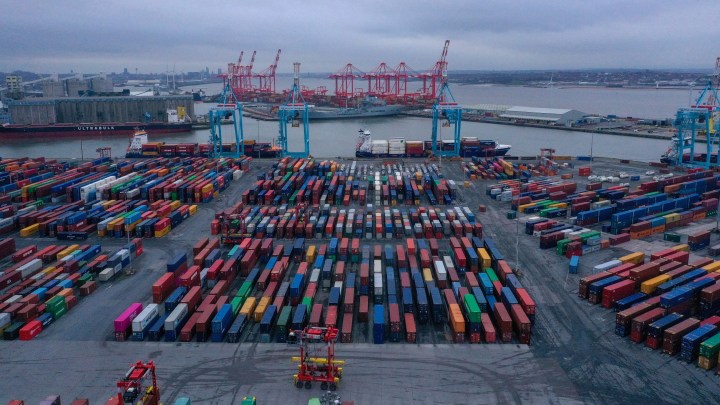
New York Fed index looks at pandemic’s effect on the global supply chain
New York Fed index looks at pandemic’s effect on the global supply chain

The Federal Reserve Bank of New York came out with a new measure for global supply chain disruptions Tuesday, aptly named the global supply chain pressure index. It’s a barometer that takes into account cross-country transportation costs and production pressures on an international scale. Unsurprisingly, it shows that supply chain pressures are at historic highs.
But can one barometer really capture the complexities of the global supply chain?
If there’s one thing economists love, it’s an index. So it’s sort of surprising that there wasn’t one to measure these disruptions before.
“Well, bits and pieces have been around,” said Jan Groen, an officer in the New York Federal Reserve Bank’s research and statistics group. Groen, one of the creators of the global supply chain pressure index, said those bits and pieces are shipping rates, manufacturing surveys and delivery times.
“The innovative part of what we’ve done now is to bring them all together in one metric,” he said.
That one metric shows that recent supply chain disruptions are extreme and unprecedented, according to Groen. Still, this is an index based on other indexes. And Amy David, clinical associate professor of management at Purdue University, said it’s missing something.
“Our entire global economy runs on labor,” she said.
It’s hard to capture the global labor market when countries measure it differently, David said. But, “it makes me a little nervous to see an indicator that doesn’t have a lot baked into it about the labor situation.”
Still, this barometer helps consumers understand why their new couch hasn’t been delivered after three months — it’s tangible.
“I’m kind of excited,” said Yemisi Bolumole, the Ryder professor of supply chain management at the University of Tennessee. She added that the index is a helpful — if generic — reference point.
“Sort of like, ‘Don’t give me too much detail, just give me a temperature,’ right? Like, I’m not sure if it’s the flu or a cold, but I know you have a fever of 99,” she said.
Bolumole warned that this metric tells us about past trends, and forecasters shouldn’t use it to predict the future.
There’s a lot happening in the world. Through it all, Marketplace is here for you.
You rely on Marketplace to break down the world’s events and tell you how it affects you in a fact-based, approachable way. We rely on your financial support to keep making that possible.
Your donation today powers the independent journalism that you rely on. For just $5/month, you can help sustain Marketplace so we can keep reporting on the things that matter to you.

















